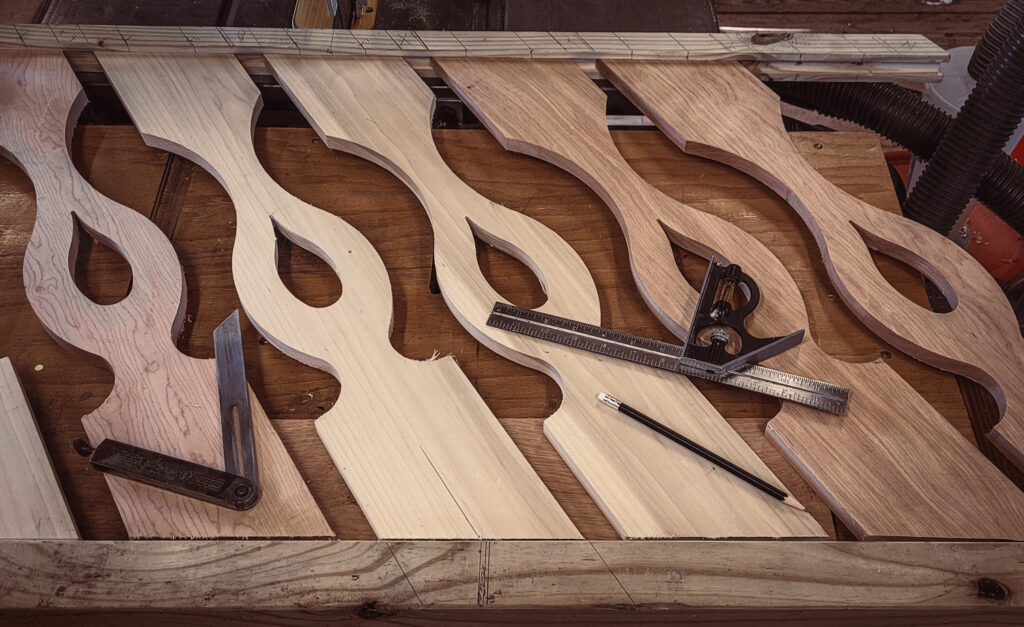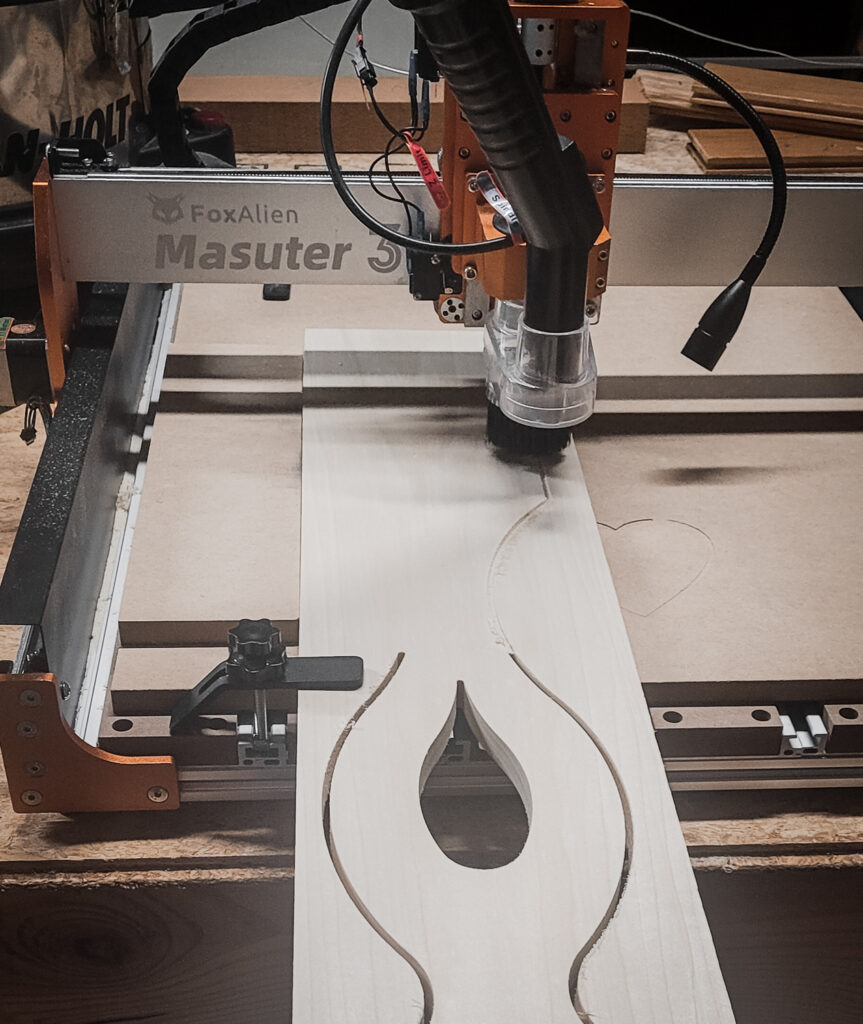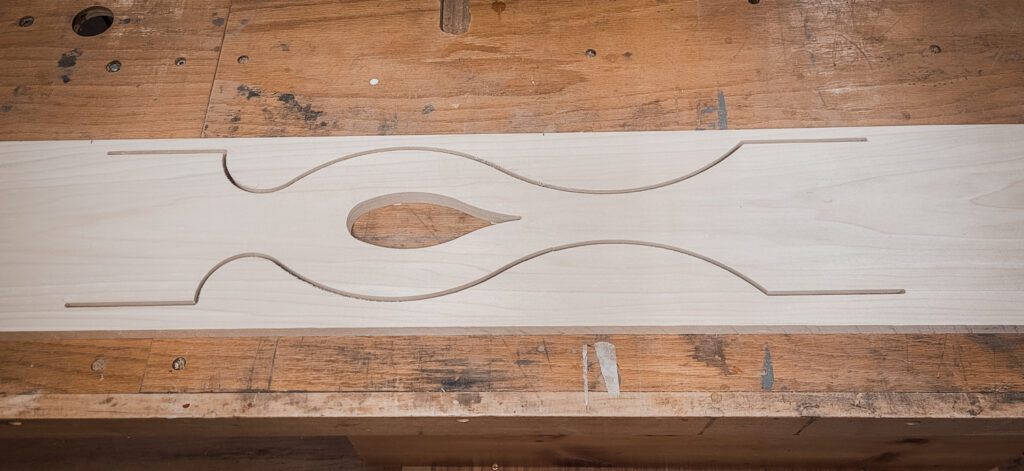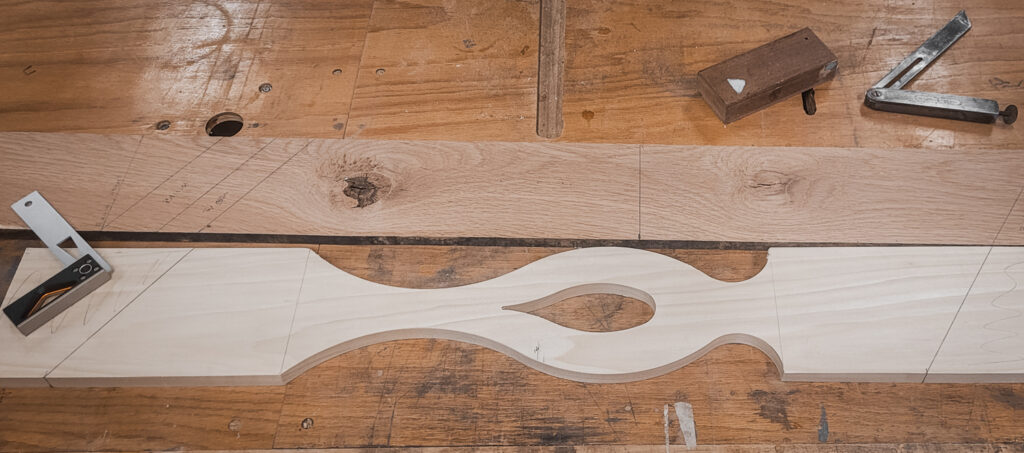I’m working on replacing the front porch stairs. When I purchased the house, there were no railings on the stairs. As part of a VA loan refinance a few years ago I had very simple railings installed. This time I want to make the stairs match the house style. We have a Victorian farmhouse, so I didn’t want to go too fancy, but wanted something more than spindles from the box store.
I initially cut the balusters on the CNC, but it was a 2-hour cut for each baluster on the machine. I’ve improved the process to 15-minutes on the CNC (cut the inside shape and a shallow outline of the outside) followed up by a jig saw and pattern bit on the router, for a total build time of 30-minutes per baluster, thought I can do the shop work while the CNC is cutting the next baluster.
Today I started fitting the balusters to the top subrail to check my spacing. I’m using the porch guide from Vintage Woodworks as a start. The balusters are a mix of poplar and birch (I had a birch board laying around), but will be painted. The birch was a lot harder to to work with than the poplar (as expected).
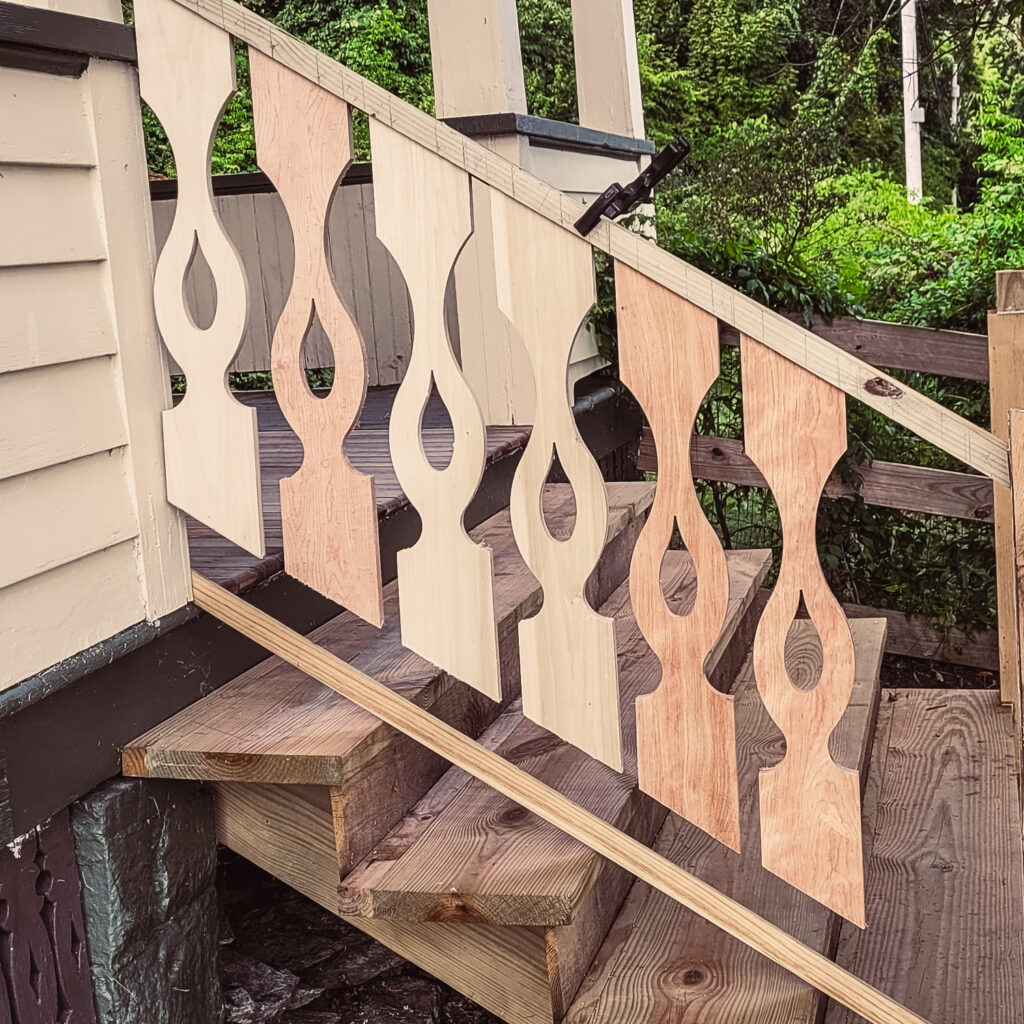
After testing the fit, I started working out how to attach the bottom rail to the balusters. Once the balustrade is assembled and passes the test fit, I will disassemble the pieces, sand, prime, and paint prior to reassembling and installing the balustrade on the porch.
